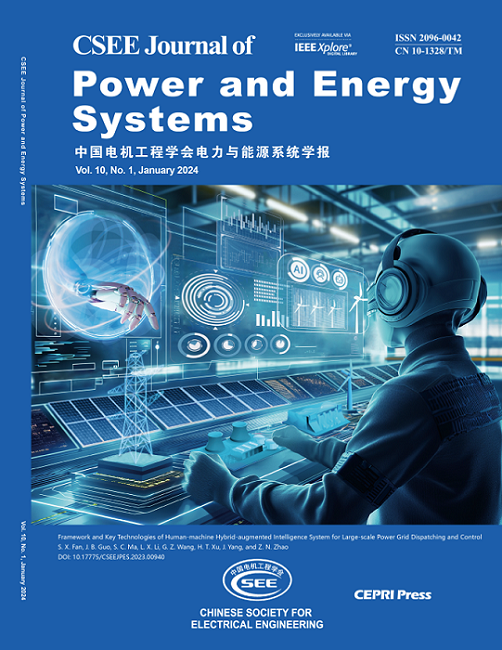“电网一图”时空数据图建模及应用场景探索
IF 5.9
2区 工程技术
Q2 ENERGY & FUELS
引用次数: 0
摘要
通过对电网的时空数据进行建模,可以更好地了解电网的运行状况,识别潜在的问题和风险,并及时采取措施对系统进行调整和优化。与母线-支路模型相比,节点断路器模型在描述电网组件方面提供了更高的粒度,能够动态反映设备状态的变化,从而提高了电网调度和运行的效率。提出了一种基于图数据库的时空数据建模方法。阐述了从电网调度数据构建图节点、图本体模型和图实体模型,描述了时空节点破断图模型的构建和向总线分支模型的转换。随后,通过将时空数据属性整合到预构建的静态网格图模型中,构建电网的时空演化图。阐述了“电网一图”的概念及其在现代电力系统中的要求。利用构建的时空节点破断图模型和图计算技术,探讨了网格态势感知的可行性。最后,给出了在省级电网运行中的典型应用,并讨论了提出的时空图模型的潜在场景。本文章由计算机程序翻译,如有差异,请以英文原文为准。
Spatiotemporal Data Graph Modeling and Exploration of Application Scenarios in “Power Grid One Graph”
By modeling the spatiotemporal data of the power grid, it is possible to better understand its operational status, identify potential issues and risks, and take timely measures to adjust and optimize the system. Compared to the bus-branch model, the node-breaker model provides higher granularity in describing grid components and can dynamically reflect changes in equipment status, thus improving the efficiency of grid dispatching and operation. This paper proposes a spatiotemporal data modeling method based on a graph database. It elaborates on constructing graph nodes, graph ontology models, and graph entity models from grid dispatch data, describing the construction of the spatiotemporal node-breaker graph model and the transformation to the bus-branch model. Subsequently, by integrating spatiotemporal data attributes into the pre-built static grid graph model, a spatiotemporal evolving graph of the power grid is constructed. Furthermore, the concept of the “Power Grid One Graph” and its requirements in modern power systems are elucidated. Leveraging the constructed spatiotemporal node-breaker graph model and graph computing technology, the paper explores the feasibility of grid situational awareness. Finally, typical applications in an operational provincial grid are showcased, and potential scenarios of the proposed spatiotemporal graph model are discussed.
求助全文
通过发布文献求助,成功后即可免费获取论文全文。
去求助
来源期刊

CSEE Journal of Power and Energy Systems
Energy-Energy (all)
CiteScore
11.80
自引率
12.70%
发文量
389
审稿时长
26 weeks
期刊介绍:
The CSEE Journal of Power and Energy Systems (JPES) is an international bimonthly journal published by the Chinese Society for Electrical Engineering (CSEE) in collaboration with CEPRI (China Electric Power Research Institute) and IEEE (The Institute of Electrical and Electronics Engineers) Inc. Indexed by SCI, Scopus, INSPEC, CSAD (Chinese Science Abstracts Database), DOAJ, and ProQuest, it serves as a platform for reporting cutting-edge theories, methods, technologies, and applications shaping the development of power systems in energy transition. The journal offers authors an international platform to enhance the reach and impact of their contributions.
 求助内容:
求助内容: 应助结果提醒方式:
应助结果提醒方式:


